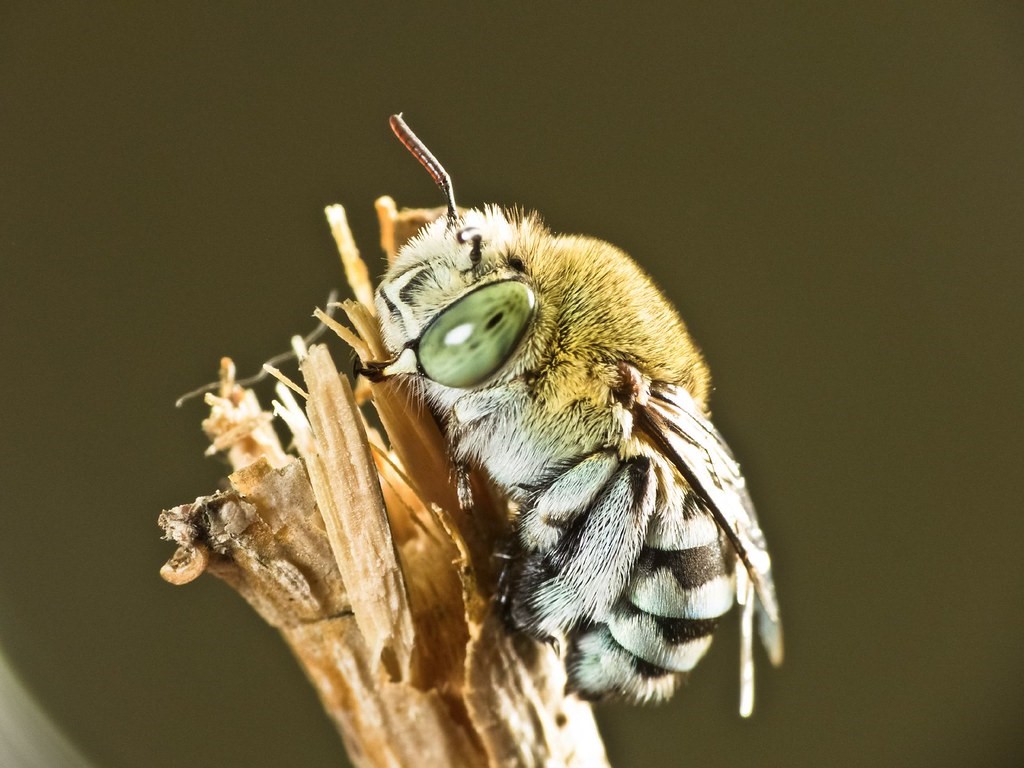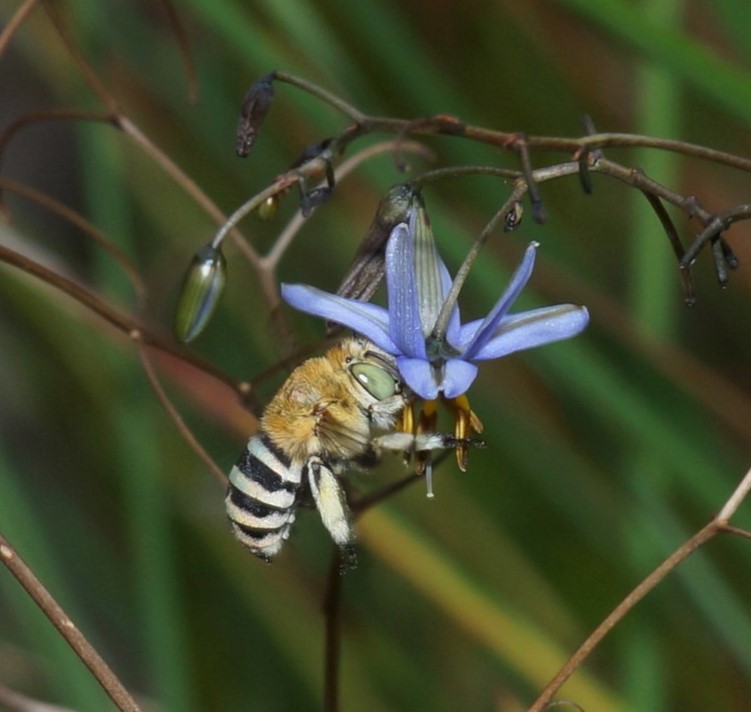 Blue-banded bees (Amegilla spp.) are a group of solitary bees found in the Moggill Creek catchment. They are known for their distinctive blue-black and yellow striped body, and are commonly found in gardens, parks, and other urban areas. They have become somewhat famous in Australia, as they are attractive insects, and lend themselves to photography well. They are also relatively unaggressive, and reluctant to sting unless captured. At least three species are present in the catchment, but they require detailed, often microscopic examination to confirm their ID.
Blue-banded bees (Amegilla spp.) are a group of solitary bees found in the Moggill Creek catchment. They are known for their distinctive blue-black and yellow striped body, and are commonly found in gardens, parks, and other urban areas. They have become somewhat famous in Australia, as they are attractive insects, and lend themselves to photography well. They are also relatively unaggressive, and reluctant to sting unless captured. At least three species are present in the catchment, but they require detailed, often microscopic examination to confirm their ID.
These insects are small but squat, with a body length of around 10-15 mm. They have a distinctive orange-brown body and legs, with a striking black and bright blue banding on the abdomen. They have a long tongue, which they use to collect nectar and pollen from flowers. Active during the day, they have a distinctive “dart and hover” flight pattern, quite different from the gentle up-and-down meandering flight of European honeybees.
Unlike honeybees and stingless social bees, blue-banded bees are solitary, which means they do not live in colonies or hives. Instead, each female builds her own nest in small cavities, such as in the ground or in hollow stems or twigs. They are known to reuse abandoned nests, such as those of other bees or wasps. They usually lay their eggs in small cells, provisioning each cell with a mixture of nectar and pollen, on which the larvae feed. The female will then seal the cell and the larvae will develop and pupate inside, before emerging as adults.
Blue-banded bees are important pollinators for a variety of plants, including tomatoes, cucumbers, zucchinis, sunflowers, and many native species. They have been found to be more effective pollinators than honeybees, for certain plants. Their long tongues allow them to reach deep into the flowers to collect nectar and pollen, which makes them more effective at pollinating plants with a deep corolla. Blue-banded bees effect a special kind of pollination, known as “buzz-pollination” that efficiently moves pollen across some plant species, such as the tomato (Solanaceae) family. They do this by grasping a flower and shivering their flight muscles.
Populations of blue-banded bees in Queensland appear numerous, and there are no current conservation concerns regarding them. However, like many pollinator insects, they may be affected by habitat loss and degradation and by pesticide use. It is important to protect and conserve their habitats and reduce the use of pesticides in order to ensure the survival of these important pollinators. One way to help maintain blue-banded bees is to plant appropriate food plants, such as native Myrtaceae such Melaleuca spp, Dianella spp., Hibbertia spp. and native, blue-flowered plants. However, at least some local species seem strongly attracted to non-native plants such as Lavenders and Duranta. One can also provide “bee hotels”with small, rounded holes or gaps in outdoor objects, which these insects use for their solitary nests.
Sandy Pollock
Blue-banded Bee (Amegilla spp.) – photo Robert Whyte

Blue-banded Bee and favourite flower – photo ‘Ron_n_Beths pics’

Wildlife Matters is published in: 

